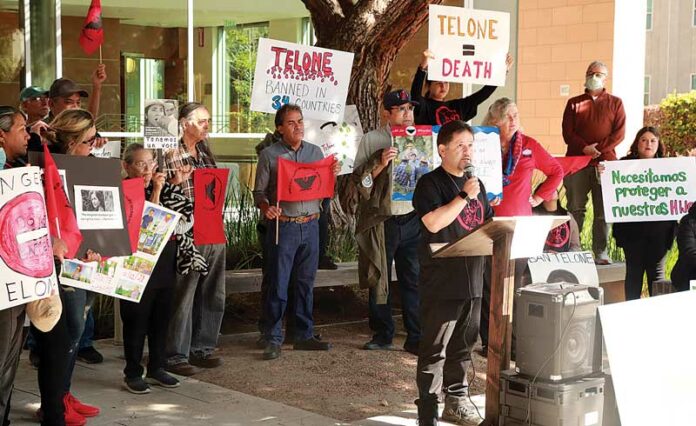
Note: reporter Todd Guild contributed to this report
SALINAS—The pesticide Telone–also known as 1,3-D–is thought to be so dangerous that it is banned in 34 countries. And yet, despite having been disallowed in California from 1990-94, it is still used on crops, including on local farms.
That was the message Tuesday during a press conference at the Monterey Government Center in Salinas, where several speakers called on lawmakers and local agricultural commissioners to take action against the chemical, which is believed to cause cancer and breathing problems.
The “Stop 1,3-D, Stop Pesticide Secrecy” news conference was hosted by Safe Ag/Safe Schools.
“There is very little awareness of the nature of the threats,” said host Yajaira Garcia. “We’re in an era dominated by industry. We need to end this sugarcoating of dangerous facts.”
According to Safe Ag/Safe Schools, air tests at Ohlone Elementary School conducted since 2012 have found 1,3-D in the air above the cancer-warning levels officially listed by state toxicologists.
Camile Torres, 10, a fifth-grader from Greenfield, spoke at the event.
“As a young person from Greenfield I’ve grown accustomed to how people like me have become insignificant, and I am aware how the county has ignored longtime concerns regarding the use of hazardous pesticides such as Telone,” she said.
She noted her brother developed lung problems that were attributed to pesticide exposure.
Among other things, Safe Ag/Safe Schools called on Monterey County Agricultural Commissioner Henry Gonzales to increase the buffer zones around schools for 1,3-D, which are currently only one-quarter mile.
That is troubling, since the State Department of Pesticide Regulation has reported that 1,3-D drifts for miles at high concentrations—far above the warning level, the organization said.
One of the highest 1,3-D levels ever recorded—at a school in Shafter in Kern County—was from a 1,3-D application 7.5 miles away.
Elementary school teacher Oscar Ramos said, “Some pesticides have been devastating to our communities. Telone is a toxic air contaminant; it’s a fumigant that can drift for many miles in a harmful concentration. State leading toxicologists tell us that a significant lifetime cancer risk can come from this exposure.”


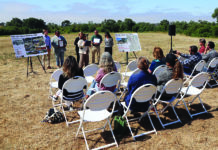
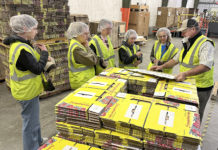
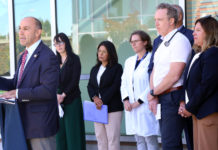
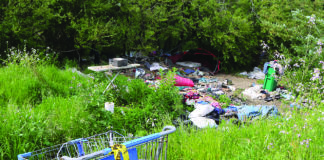







1,3-D is bringing death to kids whose schools are close enough to this noxious chemical used in agriculture.
we need to prioritize kids’live FIRST. this chemical needs to be banned in CA.
the need to control insects and weeds can be done organically. we do not need to line the pockets of chemical manufacturers because of their insistence on using this poison.
and I do not care what excuse non-organic farmers use to justify the use of this poison. there are safe alternatives. let’s use them.
our group, SAFEAG/SAFESCHOOLS, will be meeting at the next city council meeting at 630pm Tuesday evening, Oct. 11 in the council chamber. please join us.
the chemical companies have made millions from their toxics. it is now the people’s turn to decide what toxic chemicals we choose to breathe. 1,3 -D IS NOT ONE OF THEM.